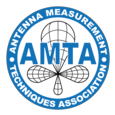George Cheng,Jan Grzesik, Yong Zhu, November 2010
We introduce a new type of planar near-field measurement technique for testing small antennas which, heretofore, have been traditionally tested via spherical or cylindrical scanning methods. Field acquisition in both these procedures is compromised to a certain extent by the fact that probe movement induces change in relative geometry with respect to, and thus interaction with, the anechoic chamber enclosure. Moreover, obstructing equipment, such as antenna pedestals, may significantly impede, or even reduce the available angular scope of any given scan. Our proposed procedure, by contrast, minimizes both the residual interaction contaminant and the threat of obstruction. We have in mind here a variant, a hybrid version of planar scanning wherein, on the one hand, we limit severely the size of the acquisition rectangle (and thus minimize the contaminating influence of a variable probe/chamber interaction), while, on the other, we really do collect near-field data throughout a complete range of solid angle around any candidate AUT, front, back, above, below, and on both sides. Such completeness is achieved through the mere stratagem of undertaking six independent planar scans with the AUT suitably rotated so as to expose to measurement, one by one, each of the faces of an enclosing virtual box. In the meanwhile, the inevitable AUT pedestal per se remains immobile and removed from any occupancy conflict with the scanned probe. We have accordingly named our new planar near-field data acquisition scheme the “Boxed Near-Field Measurement Procedure.” With subsequent use of our Field Mapping Algorithm (FMA), elsewhere reported, we obtain the entire field exactly, everywhere, both interior and exterior to the surrounding (virtual) box. In particular, we achieve enhanced accuracy in the far-field patterns of primary interest by virtue of the completeness of data acquisition and its relative freedom from spurious contamination. The angular completeness of data acquisition conferred by our procedure extends in principle to antennas of arbitrary size, provided, of course, that due provision is made for the necessary scope of measurement rectangles. The benefits are seen to be especially valuable in the case of narrow-beam antennas, whose back lobe pattern details, usually deemed as inaccessible and hence automatically forfeited during conventional (i.e., utilizing a “onefaced box,” in our new way of thinking) planar near-field testing, are thrust now into full view. Our new, full-enclosure planar acquisition technique as now described has been verified by analytic examples, as well as by hardware measurements, with excellent results evident throughout, as we are about to demonstrate.
